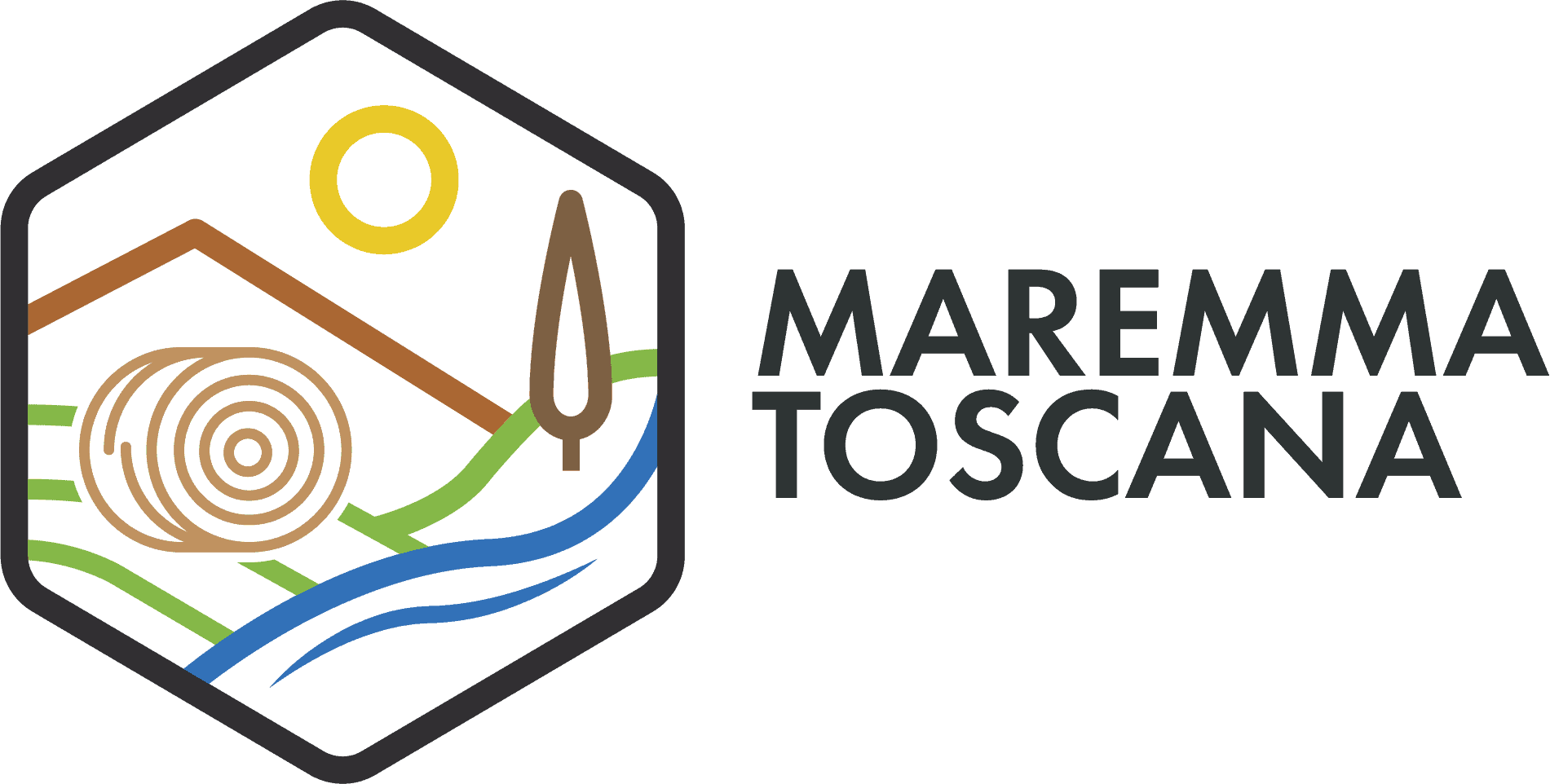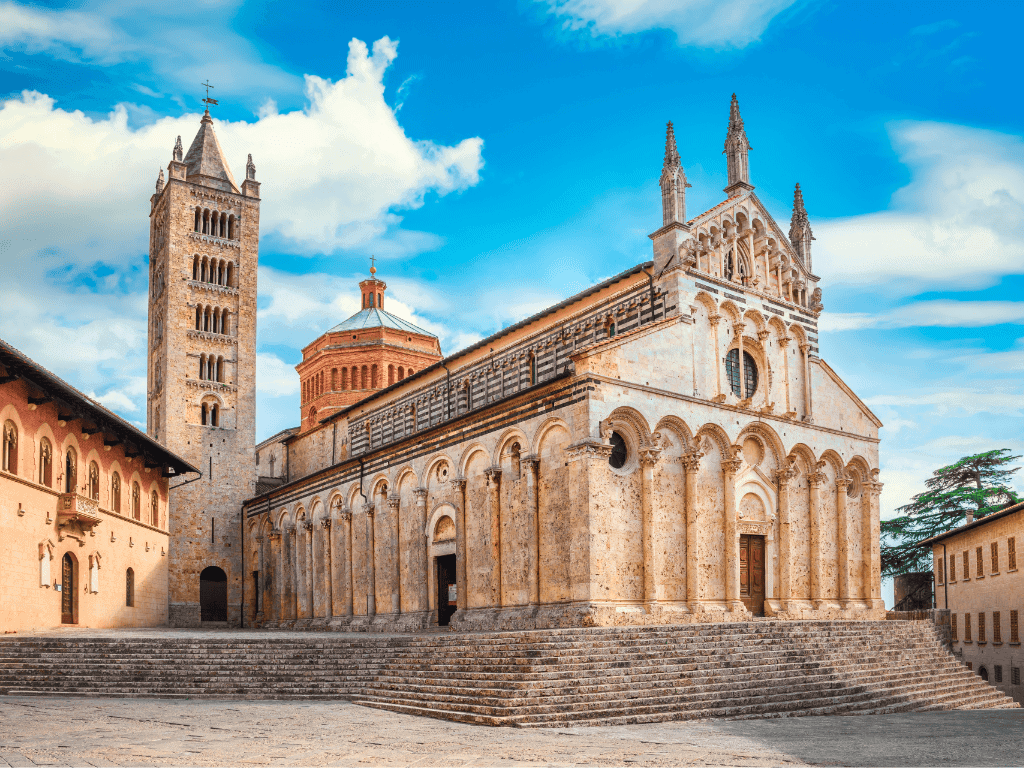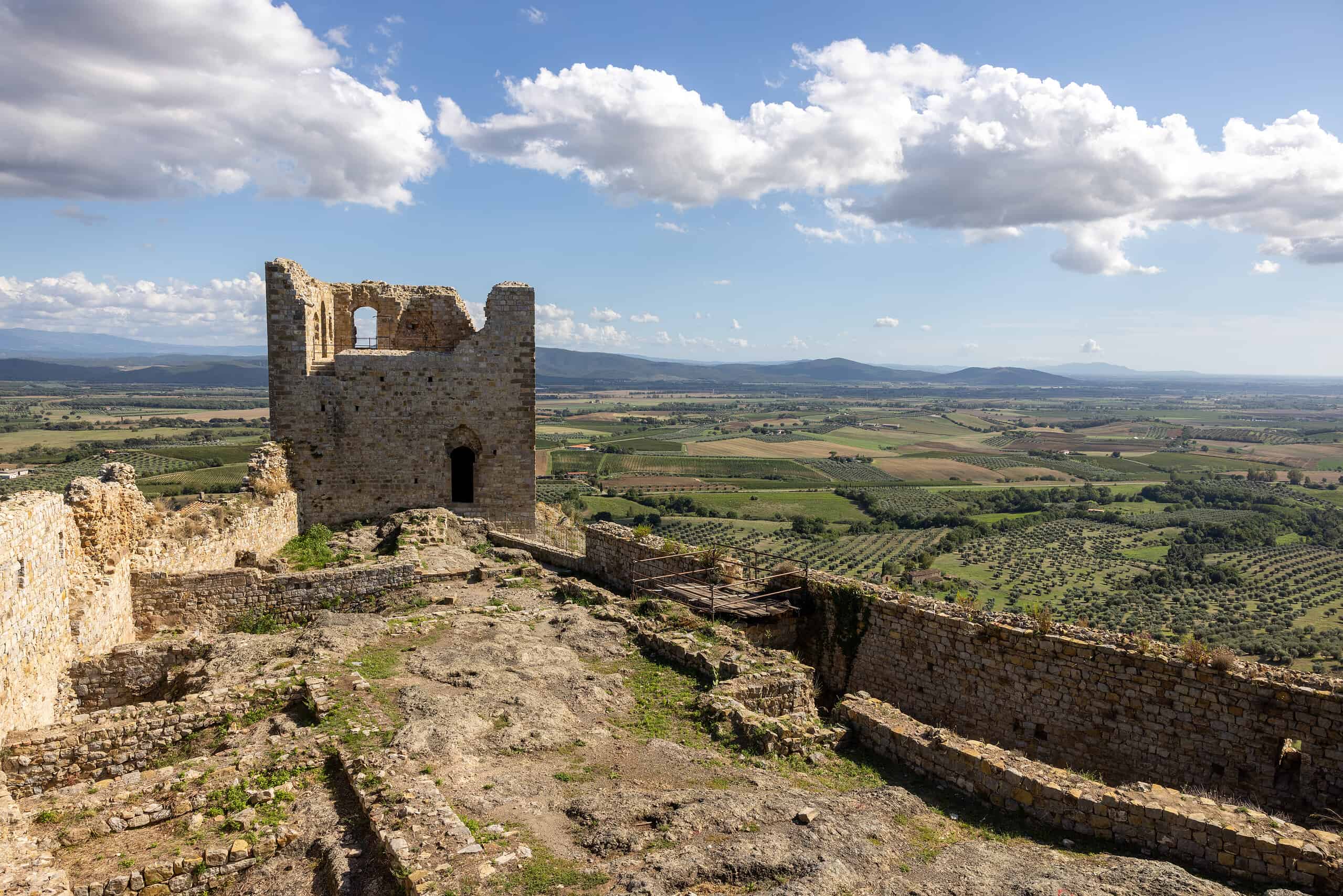AN AUTHENTIC JEWEL OF THE TUSCAN MAREMMA.
An ancient medieval town located on the Colline Metallifere.
The enchantment of Massa Marittima, an extraordinary example of medieval urban planning, is revealed step by step. The medieval town is located in the heart of the Maremma Grossetana Toscana, about 50 kilometers from the capital and 400 meters above sea level, on the Grosseto Metalliferous Hills.
From the Massetana road which goes around the hill and then via Ximenes you arrive in front of the Fonte dell’Abbondanza, a building which dates back to 1265. But it’s only the beginning. Another hundred meters – the car must be left in the municipal car park – and you find yourself in front of one of the most evocative squares in Italy. The cathedral (or duomo) of San Cerbone, the Bishop’s Palace, that of the Podestà and the municipal one are all close, but do not face each other due to a refined play of symmetries, according to some studied down to the smallest details so that none of the powers would appear “submissive” to the others. And so, by a whim of history, the city of Massa Marittima, among the first in medieval urban planning, brought together all the powers of public life in a single square. Truly remarkable.
VISIT THE THIRD PARTYERS
What to see in Massa Marittima
Massa Marittima was divided into three districts, called Terzieri. The farmers lived in the village and the artisan workshops, furnaces, workshops and stables were located here. Going up the hill you came across the Cittavecchia, with the cathedral, the buildings of the Municipality and the Podestà and the homes of the nobles; Higher still there was Cittanova, where the less wealthy strata resided. Each of the three levels was representative of a different social class and heated rivalries existed between the inhabitants of the three Terzieri. The only thing that united them was their interest in the crossbow, an essential weapon for the defense of the city. The division of the districts of Massa Marittima still remains today: the borders of the Terzieri Massetani, in fact, are marked by colored tiles applied on the walls of the “border” houses.
THE AMAZING SCENOGRAPHY OF PIAZZA GARIBALDI, IN THE CENTER OF MASSA MARITTIMA, ARISES FROM THE HARMONIOUS ARRANGEMENT OF THE VOLUMES OF THE CATHEDRAL AND THE BUILDINGS THAT SURROUND IT.
The cathedral, in Romanesque-Gothic style, stands on a stepped podium: to increase the perspective effect of the façade, which is transverse to the square, the spaces between the columns on the left are a little wider than those on the right. Due to the anomalous position of the church, the gaze runs along the left side, which opens into a fan-shaped churchyard and closes with the Bishop’s Palace, on which the austere bell tower stands. The Cathedral of Massa Marittima is dedicated to San Cerbone, who escaped from Africa in the 6th century due to the barbarian invasions and took refuge in Populonia where he founded a diocese, as illustrated in the façade architrave. Of great importance are the baptismal font (1326), the panel with the Madonna delle Grazie by Duccio da Buoninsegna and the Ark of San Cerbone, an exquisite masterpiece of Sienese art (1324). The non-aligned layout of the fourteenth century Praetorian and Podestà Palace, whose façade is dotted with noble coats of arms and which houses the archaeological museum of Palace of the Counts of Biserno and the contiguous Town Hall – composed of three distinct buildings built at different times – contribute to the multiplication of singular views and glimpses.
The refined play of perspectives continues with Palazzo Malfatti and the loggias of the Municipality, located in front of the Municipal Palace, which close the square with the typical medieval narrowing due to defensive purposes. Via Moncini climbs up to Porta alle Silici, between the Old and New Towns, where geometric planning began due to the urban growth of Massa at the beginning of the 13th century. The monumental Fortezza dei Senesi (Cassero) dominates the scene, a work by Angiolo Ventura, the architect who designed the Mangia tower in Siena. A bold and majestic bridge connects it with the Torre del Candeliere e dell’Orologio, built at the beginning of the thirteenth century inside the fortress by the people of Massa and then cut off by about a third of its original height by the Sienese, after the conquest of Massa ( 1335). Today the tower can be visited and is an excellent panoramic point to see the historic center from above and the surrounding hills up to the sea. Taking Via Diaz you arrive at the former Church of San Pietro dell’Orto, home to the new Diocesan Civic Museum of Sacred Art, intended to house the Maestà by Ambrogio Lorenzetti, a masterpiece of the Sienese master’s mature age, and other valuable works. A room will be dedicated to contemporary art with the works of the Angiolino Martini donation which includes, among others, canvases by Mario Schifano, Renato Gattuso, Pietro Annigoni, Remo Squillantini and Franco Gentilini.
THE MINE MUSEUM AND THE MUSEUM OF MINING ART AND HISTORY
Although mining is no longer one of the main resources of Massa Marittima, a visit to the Mining Museum, founded in 1980, is of extreme interest. There are seven hundred meters excavated on the surface (this is the only difference with real mines, which usually develop in depth) with three tunnels and six hundred work tools. Located in the immediate vicinity of the historic center of Massa Marittima, the museum occupies a series of tunnels dug during the Second World War as an anti-aircraft shelter for the population. The collaboration of the old miners in setting up the museum made it possible to reconstruct even the atmosphere of the mining environment: from the lumber yard to the canteen, from the descent to the jet stoves. The different types of armament with which the tunnels were supported are also visible. The in-depth analysis of the mining activity is completed by a visit to the fifteenth-century Palazzetto delle Armi, home to the Museum of Art and History of Mining, inaugurated in 1984, where there are interesting cartographic and bibliographic documentation, as well as objects relating to the mining history of the area.
Events history and resources
Info Massa Marittima
The origins of the Municipality of Massa Marittima
On a hill in the coastal Maremma, Massa Marittima originates from an Aldobrandeschi castle, the Monteregio Castle (8th-9th century) located in the historic centre, which was an episcopal seat from the 11th century. Free municipality in 1225 (when the two nuclei of Massa Vecchia, low, and Massa Nuova, high, planned in 1228 took shape), it was conquered by Siena (14th century) and by the Medici (16th century).
The Gyrifalcon Crossbow
In Massa Marittima, on the last Sunday of May and the second Sunday of August, the historical re-enactment of the Balestro del Girifalco takes place, in which representatives of the three districts of the city compete. The event begins around 5pm and includes, in addition to the crossbow competition among the Terzieri, a historical parade and flag-wavers.
Resources on Massa Marittima
Municipality of Massa Marittima – Services and information on Massa Marittima by the municipal administration.





